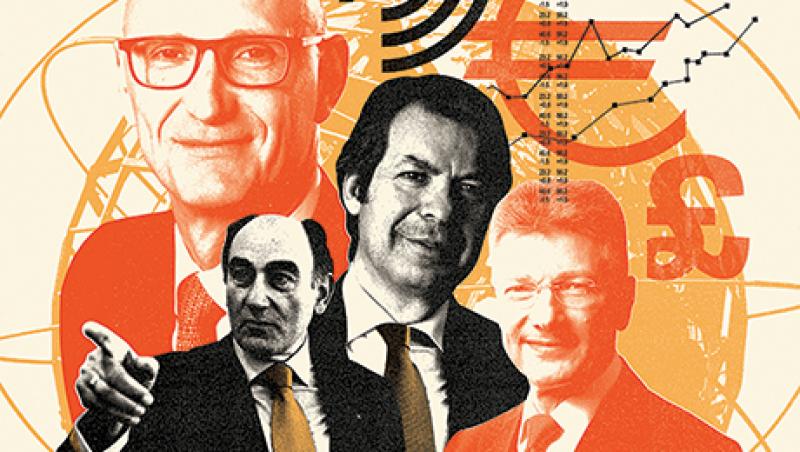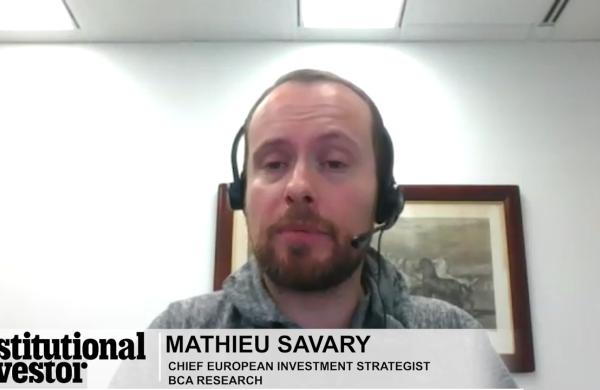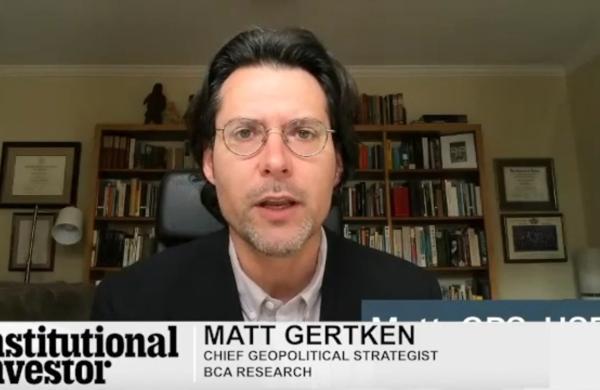“The outlook in Italy today is better than it was even six months ago — a fact that markets are missing at the moment — so we expect the return to consumption and investment to gain speed,” reports Carlo Messina, who in 2013 became chief executive officer of Intesa Sanpaolo, the nation’s largest bank by market capitalization (€39.2 billion, or $42.8 billion).
Last year Italy posted real gross domestic product gains for the first time since 2011, at 0.8 percent, according to government figures. This year the European Commission expects the euro zone’s third-largest economy to expand by 1.4 percent.
“The real estate market is growing, consumer confidence is returning, and businesses are investing in growth domestically and abroad,” the 53-year-old points out. “For Intesa Sanpaolo this outlook means that our strategy remains the same, to support the recovery by extending credit to households and businesses. To me that’s what banking is about: the real economy.”
The Turin-based financial services firm, formed in 2007 by the merger of Italy’s Banca Intesa and Sanpaolo IMI, continues to bolster its core retail and corporate businesses while also focusing on such high-growth market segments as private banking, asset management and insurance.
“Italians are wealthy, and they like to save. The total household wealth is €9 trillion, so the opportunity is immense,” Messina explains. “Italians are also very conservative investors. Most of this wealth has been in cash, real estate and Italian government bonds, but the recent crisis has them hungry for better returns.”
In December, Intesa opened a private banking branch in London, as a way “to tap into the large presence of wealthy Italians in the U.K.,” he says. It plans to do the same in New York.
The lender is also expanding its insurance business, which increased profits in 2015 by 18.4 percent year over year, to €1.1 billion, by introducing products in both property and casualty and life coverage, he adds.
One growth strategy not under consideration is M&A. “Speculation that we might consider participating in Italian market consolidation is totally off target,” he declares. “If there is a flight to quality from other banks, we expect to benefit without the need for acquisitions.” Nor does he see opportunities in foreign acquisitions. “Cross-border integration is very complex, and I think it would distract from our very strong core business,” the CEO says, although he concedes the bank would be open to “small, high-quality acquisitions” in wealth management as a way to gain clients and private banking talent.
Messina’s commitment to expansion at a time when many businesses have adopted a bunker mentality in response to gloomy global growth projections wins him many admirers. Money managers and sell-side analysts who participated in the All-Europe Executive Team, Institutional Investor’s annual ranking of the region’s best corporate leaders, insist that Intesa is the top institution in Europe’s banking sector and Messina its best CEO. This year’s survey results reflect the opinions from nearly 1,665 investment professionals at close to 570 financial services firms. Respondents from the buy side work at firms that collectively manage an estimated $4.1 trillion European equities.
The Honored Companies table in the navigation panel at right lists the companies that receive the highest scores in each of 31 industry sectors. Click on the Best CEOs, Best CFOs and Best IR Professionals to view the winning individuals in each category. Best IR Companies shows which entities come out on top when responses to IR attribute questions are aggregated.
Winners will be honored at a dinner and ceremony on Wednesday, June 15, at 155 Bishopsgate in London. Click here for more information.
M&A may not be part of Intesa’s forward-looking strategy, but it’s a major consideration at Continental, the leading company in Autos & Auto Parts. Europe’s No. 2 tire maker is “working toward our goal of further reducing our economic dependency on the automotive industry,” asserts Elmar Degenhart, who became CEO in 2009. “Therefore we are ruling out neither further acquisitions that strengthen our business with other industries nor takeovers in the automotive sector that strengthen our existing expertise.”
Examples of the Hanover, Germany–headquartered company’s recent purchases include last year’s €1.4 billion buy of U.S.-based Veyance Technologies, a conveyor-belt maker, and €600 million acquisition of Finland’s Elektrobit Corp.’s automotive software business.
In fact, over the past two decades, Continental has evolved from a pure-play tire maker to a technology company — and, with 13,000 developers, one of Germany’s largest software companies. “We view developing high-performance tires and then going on to produce them in their millions to be just as much a demand on a technology company as developing innovative materials such as special foils that protect reservoirs from being contaminated and from evaporating, while simultaneously converting solar power into electricity,” he explains.
What he describes as “shaping the future of mobility” is an important initiative for the company beyond its central tire manufacturing business. “We are talking about clean air, zero accidents and intelligent mobility. We are working intensively on clean vehicle power, on systems and solutions for maximum traffic safety and, above all, on a fully interconnected, comfortable and ultimately automated driving experience,” explains Degenhart, 57. “In doing so, we further invest in advanced driver assistance systems [ADAS], automated driving, the electrification of the drive train and cloud based services for the car.”
Continental expects to boost its presence in the ADAS industry from €1 billion this year to roughly €1.5 billion in 2018, given the increasing digitization of electronics, sensors and software. Already, the company generates more than €14 billion, or 60 percent of its automotive sales, from digitization technologies, he says.
Given the uneven global economic outlook, Degenhart says he directs the company in accordance with the principles of value-oriented management. “By doing so, we are able to generate a return on capital employed that exceeds 20 percent,” he continues. “To cope with increasing market volatility, fluctuating exchange rates and raw materials prices, we will further balance our sales across different markets and customer segments. Our strong financial basis enables us to continue to act strategically and effectively.”
That base took some time to build. Degenhart joined the company at a time when Continental was hobbled by both the financial crisis and debts from its €11.4 billion takeover of Siemens VDO Automotive in 2007. It has since strengthened its cash position to such an extent that management has been able to reduce debt from €10.4 billion in 2008 to €3.5 billion today. Also, equity is now €13.2 billion, its highest level to date, and the equity ratio is back to a healthy level of just over 40 percent.
“Strengthening our high-performance mentality has been of at least equal importance as ensuring our financial basis right from the beginning at that time,” Degenhart concludes. “Our intention was to prepare the organization for the challenges to come, such as constant change in light of the progressing digitization of mobility.”
Telecommunications is a far less cyclical industry, according to Timotheus Höttges, who in 2014 was promoted to CEO of Deutsche Telekom — the No. 1 company in the sector. “In good times or bad, the best thing to do is to work at improving our customer propositions,” he believes. “Our investments in fiber, [long-term evolution] and innovations such as the cloud empower our customers to perform better whatever the economic environment is.”
One such undertaking is the Bonn-based outfit’s multiyear Pan-Net project, a significant technological transformation that will centralize service platforms across its 12 subsidiaries in Europe. This is an example of the German carrier’s priority, which is “to increase the value of our existing businesses and leverage synergies between them,” observes Höttges, 53. Even so, he notes that regional markets are “too fragmented in a global context, and therefore consolidation would make sense.”
Deutsche Telekom has actively pursued M&A in other parts of the world. In the U.S. its 2013 acquisition of MetroPCS Communications strengthened the position of its T-Mobile unit. In the U.K. the company formed a joint venture with France’s Orange in 2010, Everything Everywhere (now known simply as EE), and earlier this year turned it into a 12 percent shareholding in BT Group, the country’s leading operator, with “significant scope for further value creation,” according to Höttges, who joined Deutsche Telekom in 2000.
Spain’s Iberdrola, Europe’s No. 1 utility by market capitalization and the top-ranked outfit in the Utilities sector, has undergone significant changes since José Ignacio Sánchez Galán, 65, took over as CEO in 2001. Most significantly, he and his team early on embraced the production and delivery of clean and competitive electricity and gas. “Despite public concern about the challenges posed by global warming being less significant than they are today, we firmly believed in the growing importance that decarbonization would play in the years ahead,” he says.
Two-thirds of the Bilbao-based company’s installed capacity is emissions-free, and Iberdrola operates 25 gigawatts of renewable energy assets, boasts emissions that are 40 percent lower than its peers’ and is the world’s top wind energy producer, according to Galán.
Also during his tenure, the company has taken on a more global profile. “We realized that in order to expand beyond the borders of a mature electricity market such as Spain we had to look to countries or areas that provided security for investment, regulatory stability and opportunities for growth and development,” he explains. “Gradually, we strengthened our presence in Mexico and Brazil, and we entered the British and North American markets.”
Today, Iberdrola generates roughly 60 percent of its earnings from outside Spain, with total assets worth €100 billion and revenue of €30 billion. In 2001 it generated just 1 percent of earnings before interest, taxes, depreciation and amortization from overseas, its assets were valued at €18 billion, and revenue stood at €7 billion. During that period, the power company’s market cap has tripled, to €38.7 billion.
While acknowledging that the short-term economic outlook may be bleak, Galán points out that the International Energy Agency forecasts electricity demand will grow twice as fast as demand for primary energy (such as coal, oil and gas) over the next 25 years. “And even in markets where demand growth is expected to be more moderate, investments will still be essential,” he says, noting that the U.S. alone will require more than $2 trillion to upgrade its electricity generation and transmission infrastructure.
“Globally, advances in technology and efficiency, as well as extending electricity supply to more than 1 billion people still lacking it, provide reasons for optimism in our industry,” he declares. “I cannot think of many other capital-intensive sectors with such a clear long-term horizon of growth.” •
Get more research and rankings.






